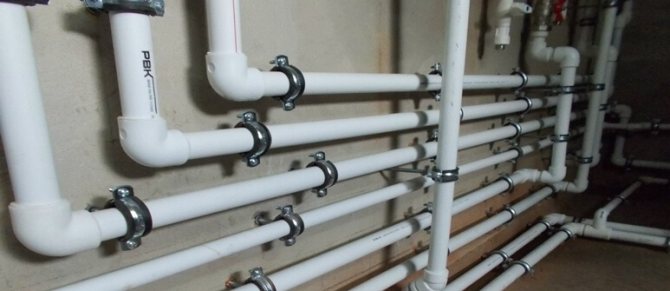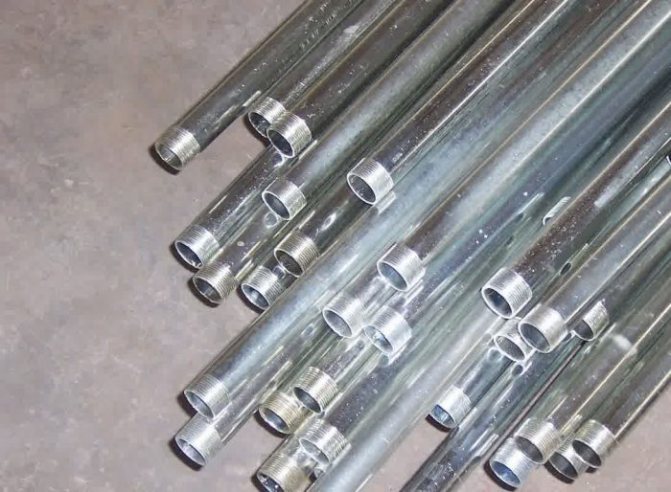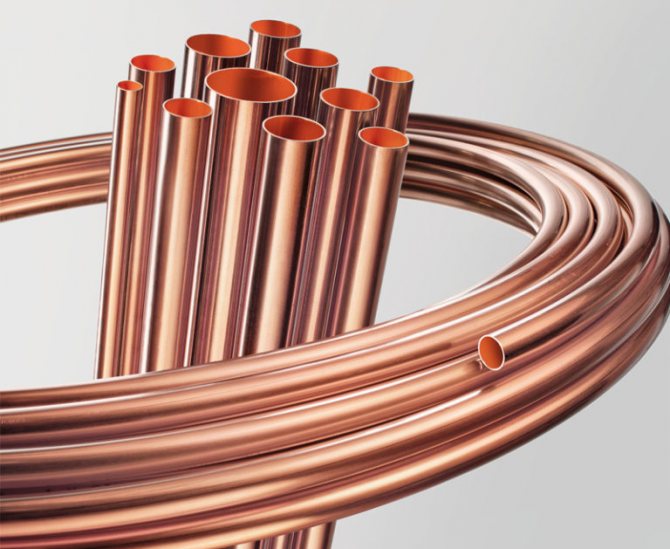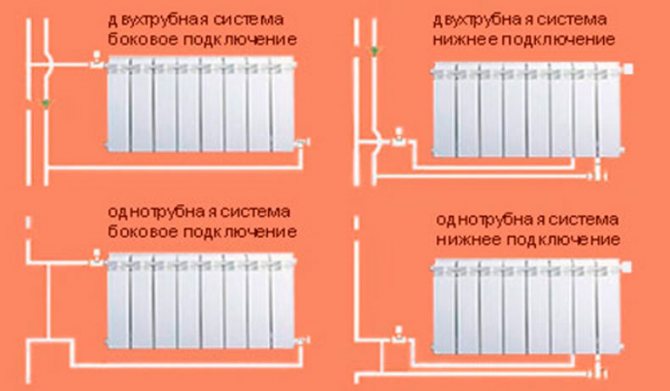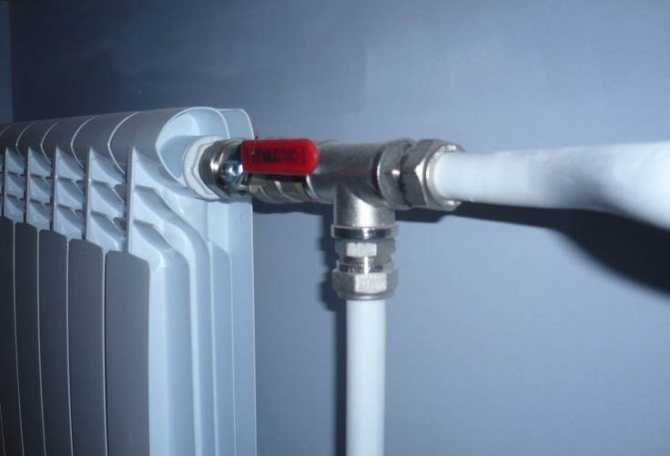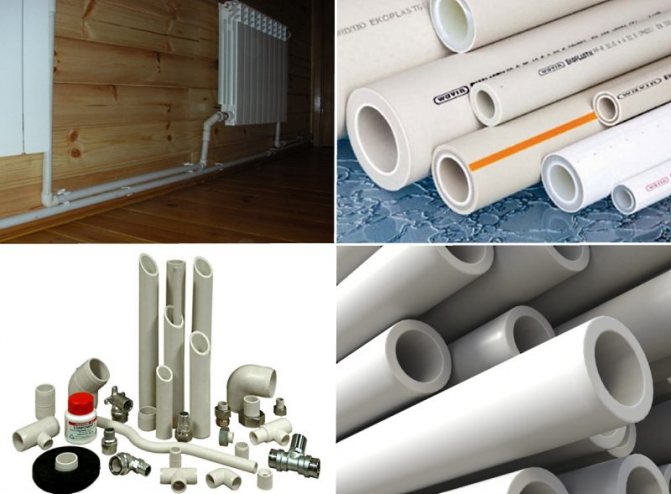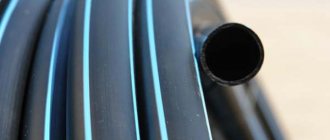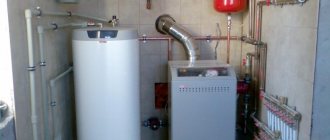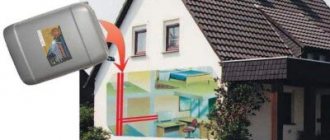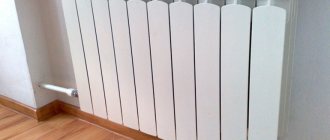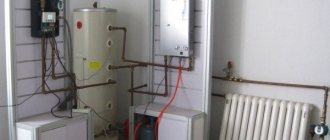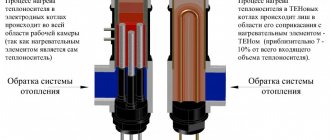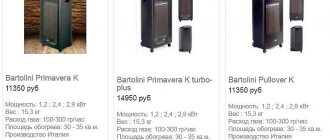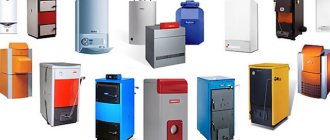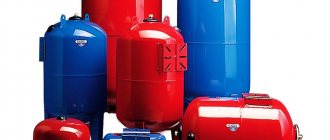The modern market offers a very wide range of different types of pipes for the installation of heating systems. It is sometimes difficult for a person who does not understand the essence of the issue and wants to mount or reconstruct the heating of his house, making the right choice. Consultations with specialists often lead to nothing, since everyone offers the material that is convenient for him, profitable, and so on.
On the Internet forums on this issue, too, controversy continues. So all the same, which pipes are better to use for heating? In this material, we will try to reveal all the positive and negative aspects of each material, so that every homeowner can make an informed choice.
Selection of pipe materials
Probably, it is no secret to anyone that the use of plastic (polymer) pipelines in a private house is the most optimal option, both in terms of price and quality. However, many homeowners would like to see quality and durability as the main parameters, and the choice among polymer pipes is already quite high and how they differ is not always clear.
If you want to understand in more detail the properties of pipe materials, then this article is for you. In it we will consider: steel, copper, metal-plastic (PEX / AL / PEX, Pe-rt / Al / Pe-rt), polypropylene (PP) and cross-linked polyethylene (PEX) pipes.
Types of pipes suitable for private households
When deciding what materials to make the pipeline from, the home owner must make a decision, considering the following factors:
- type of heating system wiring;
- the level of thermal insulation of the building;
- number of floors;
- the possibility of using pressure equipment;
- reinforcement material.
An equally important selection criterion is the material from which the pipes are made.
Steel
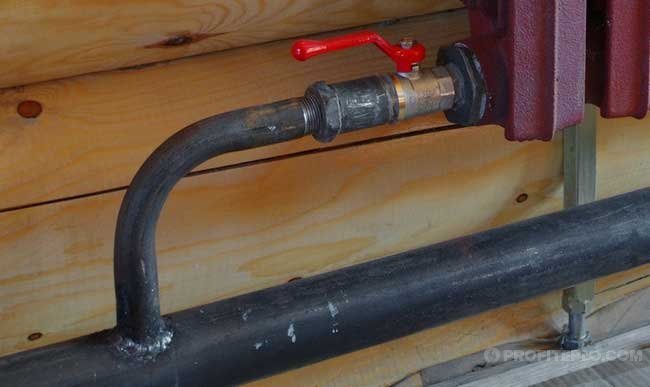
Steel pipes used in modern heating systems
Metal products are produced by hot or cold rolling. During the manufacturing process, pipes acquire the necessary physical and operational properties.
The main advantages of steel pipes used in modern heating systems of a private house
:
- immunity to high temperatures;
- excellent strength characteristics that can withstand significant pressure and mechanical stress;
- sufficient heat-conducting properties;
- ease of connecting elements to each other;
- high rigidity of the material allows you to minimize the number of fasteners used to fix the pipeline on the wall or other vertically located surfaces;
- availability of components and fittings;
- the possibility of joint assembly of elements made of steel and small parts made of other metals;
- long service life - 50 years.
The advantage in the versatility of steel pipelines is offset by a significant disadvantage - low corrosion resistance. This issue is relevant both in connection with the internal rusting of pipes (it will take about 40-50 years to destroy the walls), and due to the oxidation of the outer surface of the products, which significantly impairs the aesthetic characteristics of the pipeline as an element of the interior.
Until recently, there was no alternative to pipelines made of metal elements due to their durability and reliability. But such systems require regular flushing to remove build-up rust and mineral deposits.
The cost of steel pipe products is low, the products can be bent at the required angle after heating without any problems, and are able to withstand pressures up to 25 atmospheres. Steel pipes can be connected to both water heating boilers and steam generators without any restrictions on the number of storeys of the house, the temperature of the coolant, and the wiring diagram.
In most cases, steel pipes have to be hidden behind false panels or treated with heat-resistant coatings.
Copper
Copper tubing differs from steel in its attractive appearance, therefore it is often installed not only in private houses, but also in apartments. Copper pipes, which are used for heating systems, in addition to aesthetic properties, also have a number of other advantages.
:
- high ductility, which allows you to create a bend at the required angle without heating the pipe;
- thermal conductivity, due to which the temperature of the coolant can be kept at around + 200 ... +250 ° С;
- a low roughness coefficient, due to which the circulation of the coolant is carried out at a high speed, providing a temperature difference in the supply and return pipes of + 5 ... +10 ° С;
- long service life, which is confirmed by the found pipelines, which were built more than a hundred years ago.
Due to the increased thermal conductivity, pipes will not burst even when the system is frozen and thawed. They are able to withstand many heating and freezing cycles.


Copper heating pipes
The disadvantage of copper pipes is the high cost, so the answer to the question of which pipes to choose for heating a private house refers only to the income level of the home owner.
Related article: Steel heating radiators: calculating the power of panel devices, plates and registers
Polypropylene
One of the most affordable options for arranging a heating system, which has many undeniable advantages over products from other materials. Polypropylene pipes have:
- smooth inner surface, which prevents the formation of sediment on the walls;
- low specific gravity of the material, which reduces the cost of delivery;
- attractive aesthetic appearance, so you can not decorate them;
- low coefficient of expansion, compared to metal pipes;
- long service life, which is up to 20 years.
In addition, polypropylene heating systems require the simplest maintenance (rinsing and cleaning).
The main characteristics of the products are printed on the outer surface in the form of a special marking. It indicates a number of parameters, including the permissible temperature range of application.
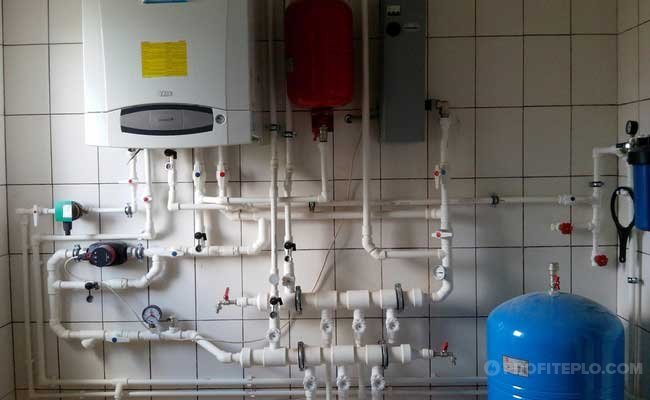

Polypropylene pipes used in heating systems
In addition to many advantages, polypropylene pipes also have disadvantages:
- during the assembly of the pipeline, the use of special equipment for soldering elements is required;
- insufficient elasticity of the material, requires the installation of special fittings in pivot points;
- the impossibility of flushing the assembled pipeline - to eliminate blockages, dismantling the section between the fittings is required;
- low temperature resistance, limiting the temperature of the coolant to + 70 ... +90 ° С;
- high plasticity, which can lead to sagging of extended sections.
Cross-linked polyethylene (PEX) pipes
This material is relatively new and not yet widely available on the market. The products are manufactured using the so-called “stitching” technology, which strengthens molecular bonds and increases strength.
Related article: How to choose the right wall-mounted double-circuit gas boiler for heating a private house


XLPE pipes used for heating
PEX plastic pipe products have the following advantages:
- resistance to internal pressure and temperature up to +90 ° С;
- high density of the material;
- the ability to give the pipe the required angle of rotation, and after cooling and heating again, the "memory effect" is triggered - the product returns to its previous shape;
- light weight, which simplifies transportation and installation;
- the smoothness of the inner surface, which does not allow sediment deposition on the walls;
- insignificant indicator of linear expansion;
- long service life - from 50 years.
It is difficult to judge which plastic pipes are better for heating in a private house. Because these pipes are a new product on the market. And today there is still not enough experience in using heating systems made of this material. According to manufacturers' statements and test results, PEX pipes have not yet been found to have any defects.
Reinforced plastic
Reinforced-plastic pipes are one of the most demanded types of products for arranging heating systems.
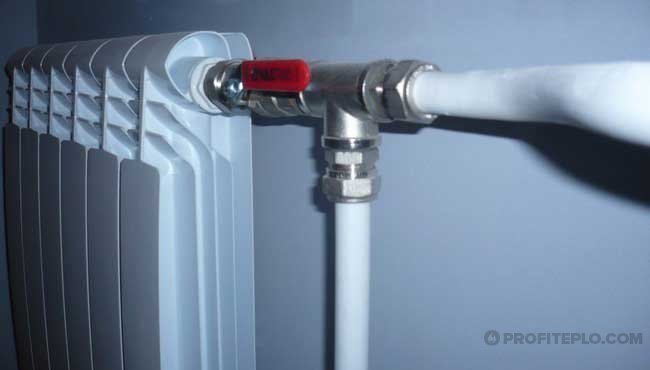

Reinforced-plastic pipes for individual heating
The popularity of the material is due to the combination of properties characteristic of both polymers and metals. They are distinguished by:
- affordable cost;
- ease of installation work;
- plastic;
- sufficient mechanical strength.
The disadvantage is the need to use expensive fittings, which, moreover, constrict the cross-section.
It is not recommended to make individual heating from such pipes in summer cottages with intermittent heating, since the products freeze and deform.
Selection criteria for pipe materials
We want to say right away that there are no bad or good pipes and materials from which they are made. There are high-quality or low-quality pipes, respectively, as well as a good or bad manufacturer. Each type of pipeline products is convenient and optimal for its specific case, which is determined by the criteria or parameters of the heating system. After choosing the material for the pipes, a specific manufacturer is selected, and the service life of the system and the convenience of its maintenance no less depend on this.
The main parameters of heating and water supply systems, according to which materials for pipes are selected:
- liquid temperature (maximum and nominal)
- fluid pressure
- method of laying pipelines
- purpose (heating systems, underfloor heating, water supply)
Features of calculation for collector heat supply
The calculation technology described above can be used with equal success for both one-pipe and two-pipe heating systems. If the heating system involves the use of collectors, then some calculations will also be required to select the correct diameter of this element:
We recommend that you familiarize yourself with: How to build a rack from a metal profile pipe
M = M1 + M2 +… + Mn,
where M is the cross-section of the collector,
M1, M2, Mn - diameters of pipelines connected to the manifold.
It can be seen from the formula that the diameter of the collector can be correctly calculated only after calculating the cross-section of the pipelines and determining the number of lines suitable for the collector.
Note! When determining the optimal distance between the collector pipes, it is customary to adhere to the "three diameters" rule. Adjacent layers should be spaced from each other at a distance equal to their threefold diameter.
Steel tubes
The main material of pipelines in the 20th century. Currently, they are used as risers for cold and hot water supply and for the installation of heating systems in high-rise apartment buildings. In addition, there is no other alternative to pipes made of "ferrous" metal so far in gravity gravity heating (stove or using AOGV), which requires large diameters and resistance to high temperatures and mechanical stress.
Pros and cons of using steel piping
- High mechanical strength
- The service life does not decrease at coolant temperatures above 95 ° C.
- Small linear expansion
- High installation costs
- High labor costs and requirements for installers (welders)
- High corrosion rate and poor quality of pipe production
- Aesthetics (steel pipes are recommended to be mounted outside, while the aesthetic appearance is not the best)
Types of pipes for heating systems
For heating systems most often pipes are used:
- steel;
- metal-plastic;
- polyethylene;
- propylene.
All pipes have their own advantages and disadvantages... If you compare them with each other, it is best to consider the performance using a table.
| Material | Working temperature ° С | Roughness, mm | Pressure loss hPa / m | Linear expansion coefficient mm / m * deg. |
| steel | 0,07 | 5 | 0,012 | |
| Reinforced plastic | 95 | 0,004 | 1,5 | 0,025−0,03 |
| Polyethylene | 90 | 0,007 | 1,8 | 0,15−0,17 |
| Polypropylene | 70 | 0,01 | 2 | 0,15−0,17 |
Reinforced-plastic pipes have aluminum layer, with the help of which they transfer minimal linear expansion and high temperature loads, while maintaining their shape. High elasticity allows pipes to be bent as needed.
Polyethylene pipes heat resistant, have high strength of connections, low hydraulic losses. It is only necessary to choose polyethylene pipes for heating with reinforcing layerwhich allows the pipe to maintain its shape.
Polypropylene pipes are used if the temperature of the coolant does not exceed 70 degrees. Due to expansion and high fluidity, this type of pipe needs additional fixation in order to avoid sagging and malfunctions. If propylene pipes have a reinforced aluminum layer, then they can be used not only for hidden, but also for ordinary wiring.
Copper
Copper pipes belong to the class of elite pipelines. In Europe, the engineering systems of many private houses are made of copper.
- Durable, non-corrosive
- The service life does not decrease at coolant temperatures above 95 ° C.
- Long service life
- Concealed mounting option (for solder joints)
- Very high pipe cost
- Not the ability to use soldering in houses with decoration
- High requirements for the qualifications of workers
- The use of better materials for thermal insulation
Recently, copper pipelines have been giving the initiative to high-quality pipes made of various types of polyethylene.
Metal-plastic, metal-polymer pipes
Reinforced-plastic pipes are a multi-layer structure: polyethylene - glue - aluminum (foil) - glue - polyethylene. These pipes are flexible enough, lightweight, have high corrosion resistance, insignificant thermal expansion. Connected using press or collet fittings. Collet connection for heating and water supply systems is not considered below, due to its low quality and not the possibility of concealed installation. The presence of an inner layer of aluminum with a thickness of 0.2-0.4 mm prevents oxygen from entering the system and significantly reduces the linear elongation of the polyethylene layers and the entire pipe, respectively. For some manufacturers, the thickness of the aluminum layer for the 16th pipe is 0.4 mm, for others the aluminum layer is solidly drawn, all these, seemingly not always noticeable characteristics, lead to an increase in the pipe's service life and its reliability, but also lead to an increase in the cost of the pipe.
- Flexible and sufficiently heat-conducting - convenient for underfloor heating systems
- The maximum temperature of the coolant is slightly higher than that of polypropylene pipes
- Low thermal expansion (5 times less than glass fiber reinforced polypropylene)
- Convenience and ease of installation
- High cost of fittings
- Reduced bore of fittings
- Pipes practically do not withstand defrosting
- Not a very clean look when installed outdoors
- Quite expensive press tool
When choosing a specific pipe manufacturer, it is worth considering what the outer and inner layers of the pipe are made of.... They are available in PEX and heat-resistant PE-RT. "Perth" has a linear expansion, several times less than that of "infantry", so the voltage between the layers of polyethylene and aluminum foil, in the second case, will be much higher. Almost all eastern and Chinese manufacturers of metal-plastic pipelines use exactly PEx materials, while the quality of "cross-linking" of such polyethylene can be low, and, accordingly, low price and short service life.
Our company, as a metal-plastic pipe for underfloor heating and radiator heating, recommends using a German pipe SANHA MULTIFIT FLEX 16Х2,0 (PE-RT / Al / PE-HD). Having a low price, the pipe is of high quality and good installation characteristics (flexibility). Made in Germany, which is confirmed by the inscription on the pipe and the barcode on the box.
Currently, the main competitor to metal-plastic pipes is cross-linked polyethylene, a material that is cheaper to manufacture and has good characteristics. When choosing between these options we always focus on the manufacturer. For example, Sanha, Tece, Prineto, Uponor, etc., which are actually produced in Europe, and comply with the European DVGW standard (the inscription can be found on the pipe itself).
What influences the choice of pipes for heating?
Usually, when deciding in favor of a particular material, the following technical parameters of the future system are considered:
- installation method - hidden or on the surface of the walls;
- type of system - one- or two-pipe, with natural or forced circulation of liquid, etc.;
- the configuration and length of the heating main, the number of radiators on one branch, the type of fuel used, the presence of sections of the route in the open air;
- the maximum temperature of the coolant;
- pressure in pipes in operating mode and during hydraulic tests.
The choice of material and cross-section of pipes for a private house is more influenced by the first three factors. The fact is that in autonomous systems, the working pressure is usually low (1.5-2 atmospheres), and you can control the temperature of the coolant yourself.
Therefore, further, considering different pipes for heating, we will pay more attention to their suitability in terms of installation and system configuration.
XLPE pipes PEXa, b, c, d
The so-called "cross-linked" polyethylene is a type of polyethylene. When creating a cross-linked polymer of ethylene, the links of its molecules (carbon and hydrogen), due to cross-links, form a three-dimensional network with wide cells. Thus, the strength characteristics of cross-linked polyethylene are laid down at the molecular level, and it is very difficult to break such bonds.
When choosing PEX pipes, attention should be paid to the degree of crosslinking. The stitching method affects the durability and performance as well as the cost of the pipes. There are three ways to obtain crosslinked polyethylene, which affect the degree of crosslinking.
Pyroxide (PEX - a) - pyroxides are introduced into polyethylene. The degree of crosslinking is up to 85%.
Silane (PEX - b) - organosilanides are added to polyethylene. The degree of crosslinking is not less than 65%.
Radiation (PEX - c) - the degree of crosslinking is 60%.
If the degree of crosslinking is 0%, then the pipes become too brittle and prone to cracking. Too little stitching can have equally serious consequences. Be careful when choosing a pipe manufacturer, even if it says that it is crosslinked using the PEXb silane method - this does not mean that the degree of crosslinking is at least 65%. Choosing European manufacturers, you guarantee for yourself a high quality product and an honest level of stitching.
- Low wall thickness
- Fittings do not narrow the flow area
- Expensive tool of European manufacturers
- Fairly expensive fittings
If we consider the trends in the use of various plastic pipes in Europe, then PEX pipes are in the lead, and annually take several percent of the market from polypropylene and MP pipes.
Unlike polypropylene pipelines - cross-linked polyethylene systems from European manufacturers can be described as - installed and forgotten. However, this will have to pay a higher cost.
When choosing this type of pipe, it must be borne in mind that all its good properties are manifested when using high-quality materials and production technologies. Most of the pipes are imported to Russia from China and the level of crosslinking of such polyethylene is not known.
It should also be remembered that PE-RT is not cross-linked polyethylene - it is heat-resistant polyethylene with lower performance and cost than PEX cross-linked polyethylene.
How to calculate the cross-section of pipes for heat supply
Before proceeding with determining the diameter of the pipeline, it is worthwhile to understand in detail the very concept of "diameter". When applied to heating pipes, it is customary to talk about several interpretations of this term:
- External diameter. A parameter required when designing a system. Consists of inner diameter and wall thickness.
- Inner diameter. Determines the throughput of the pipeline.
- The nominal value of the pipe bore. An indicator used in the labeling of plastic products.
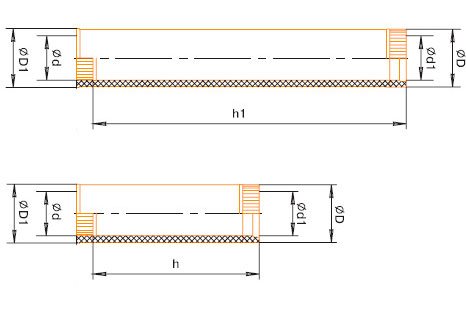

It is important! The marking of steel and cast-iron pipes is established by the inner section, copper and metal-plastic pipes - by the outer.
Quite often, pipe diameters are indicated in inches. It is easy to translate them into millimeters, which are more familiar to us - one inch contains 25.4 mm.
Calculation of the thermal power of the system
For small standard heating systems, complex calculations can be dispensed with. Here it will be enough to adhere to a few simple rules:
- For circuits with natural circulation, the optimal pipe diameter will be 30-40 mm.
- In systems with forced circulation of the coolant, pipes of a smaller diameter should be preferred. This will ensure that the fluid flow rate and pressure are optimized.
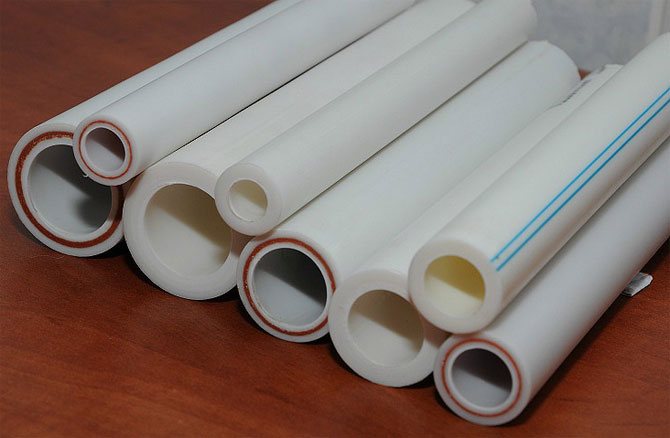

If accurate calculations are required, you can call on ready-made special programs for help, or make calculations using formulas. First of all, the thermal power of the system is determined: Q = (V * ∆t * K) * 860.
- Q - thermal power, kW / h,
- V is the volume of the heated room, m3,
- ∆t is the average indicator of the difference between temperatures indoors and outdoors, ⁰С,
- K - coefficient of heat loss,
- 860 is a constant correction factor for converting the calculated values into kW / h format.
All factors can be easily calculated, with a fair amount of confidence. Some questions can only be raised by the determination of the K coefficient.
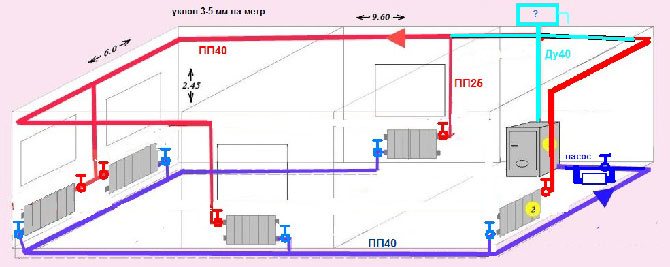

Its value depends on the level of thermal insulation of the house or room for which the calculations are being made.
The numbers can be as follows:
- K = 3-4. Building with a minimum level of thermal insulation.
- K = 2-2.9. Facing the facade with bricks.
- K = 1-1.9. Average level of thermal insulation.
- K = 0.6-0.9. High-quality insulation with modern materials.
We recommend that you familiarize yourself with: How to make and install a heat exchanger (economizer) for a chimney with your own hands
After determining the heat output of the heating system, you will need to use a special table to determine the diameter of the pipes.
The tables may vary depending on the type of pipe (polypropylene, steel, cast iron, copper, etc.) and even the manufacturer. It is more correct to take these tables directly from the websites of manufacturers. Most often, the table indicates the heat output and the assumed temperature delta. At the intersection of these parameters, the desired pipe diameter will be indicated.
In the event that it was not possible to find a table for a specific type of pipe, you can use the correspondence table for various types of pipelines.
Here, for each pipe diameter (meaning the inner diameter), corresponding models from other materials are painted. Of course, there will be some error, but for small heating systems it is quite acceptable.
The speed of fluid movement in the system
The uniform distribution of heat energy over all batteries or radiators depends on the speed of movement of the coolant through the heating system.
The diameter of the pipe, meanwhile, has a direct effect on the rate of movement of the liquid - the smaller the cross-sectional area of the pipeline, the faster (other things being equal) the coolant will move along it.
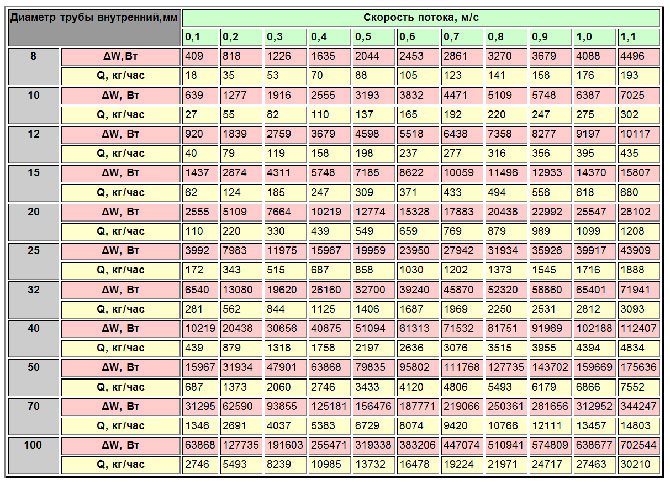

When determining the diameter of pipes, it is worth choosing the speed value in such a way that it fits within the range:
- On the one hand, the water flow rate should not be too high. This, of course, will increase the efficiency of the system, but will invariably be accompanied by additional noise.
- On the other hand, at speeds below 0.3 m / s, large heat losses will be observed. In addition, a low pressure will make Mayevsky's air vents and taps useless, since air locks simply will not reach these elements.
- The optimal speed value is considered to be indicators in the range of 0.36-0.7 m / s.
Polypropylene PP pipes
Currently, most of the radiator heating and water supply systems are assembled from polypropylene pipes and joints. High popularity of polypropylene systems was given by: low cost of pipes and fittings, the possibility of self-assembly, high quality pipes and connections. The connection of the pipe and fittings is carried out by welding (soldering).
- Due to less flexibility, they are more aesthetically pleasing in outdoor installation (relative to other plastic pipes)
- Low price of pipes and fittings
- Are not afraid of defrosting
- Concealed wiring possible due to secure connection of fitting and pipe
- Good chemical and corrosion resistance
- For high-quality installation, you need the skill of working with the tool ("soldering iron")
- At temperatures of water and coolant above 70 degrees C., the service life is sharply reduced
- Installation is possible only at positive outside temperatures
- Large wall thickness (25 PPR pipe corresponds to 20 MP pipe)
- Afraid of ultraviolet radiation
In conclusion, we would like to say that all of the above applies to pipes from well-known manufacturers who control product quality. For example, cheap polypropylene will not withstand even one defrosting - it will burst, most likely, and the service life of such a pipe will be much lower.
Pipes from Turkey. Qualitative characteristics
TEBO manufactures 20-160 mm polypropylene base products. Such products are able to withstand the effects of almost any aggressive environment.


There is a special series with aluminum and fiberglass reinforcement, they are mounted in heating systems.
Pilsa designs are also widely used in practice. Largely due to the combination of such excellent qualities as wear resistance and strength, elasticity.
Video: polyethylene pipe rolls
Any manufacturer requires buyers to strictly adhere to the rules set forth in the instructions for use. Pilsa, for example, does not allow its pipelines to be bricked into the wall, which is an undoubted drawback.
It is better to install a controlled boiler on the system in order to achieve the best results. It will allow you to maintain a temperature inside that does not exceed 95 degrees.
Novaplast produces an assortment characterized by a fairly low cost, a small selection of external fasteners. But the quality remains high.
VALTEC also boasts reliability and durability. This applies not only to pipes, but also to fittings. PP-R 100 is a polypropylene brand that has become the main one for production processes.
Firat adheres to all standards when it puts its products on the market. Therefore, its products are able to withstand even severe rust. However, there is also a drawback in the form of a high coefficient of thermal expansion.
Polypropylene of Czech origin
WAWIN Ecoplastic is a Czech company that has become practically the leader in this area of production. Quality products are not the only indicator of a manufacturer's superiority. The products are fully compliant with world-class standards. Where can Czech products be used?


- Underfloor heating and cold water supply.
- Cold water supply with high pressure, hot water supply.
- For distributions that go to hot water supply, central heating.
- With central and underground heating.
- In order to transport hot water from cold, air distribution systems.
In specialized stores, buyers can easily find:
- Fittings, all-plastic with combined varieties.
- Fiber is a series of polypropylene products.
- Stabi is a multi-layer pipe brand.
- Pp-r is a brand of all-plastic pipe products.
Fibera are plastic pipes that are reinforced with fiberglass. Linear expansion due to heat is minimal. With a low weight, the strength is quite high. The surface does not require additional treatment before welding begins.
Video
https://youtube.com/watch?v=faKtDT34YUM
FV-Plast
The manufacturer produces tubes with a rigid structure, which are protected from temperature changes by an aluminum insert. They can be installed in systems with any level of complexity.
German quality
German companies have also firmly established themselves as leaders in this market. For example, this applies to products under the Wefatherm brand. This includes not only the pipe rolls themselves, but also various fittings to create high-quality connections.
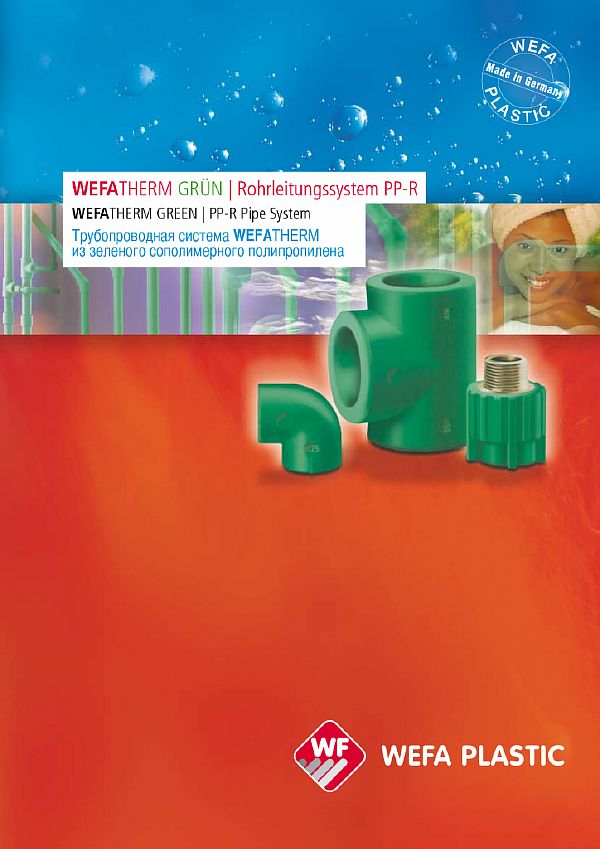

The systems presented by Wefatherm have the following advantages, differing from their competitors:
- A permissible combination of pipes of several types within one system. This is facilitated by a wide selection of fittings.
- The surface inside keeps the ideal smoothness. Due to this, constant pressure is maintained, there are no sharp drops.
Video
Akwatherm
Faser is also worth paying attention to those who are interested in purchasing quality products. They are used to supply hot water, even if the pressure reaches 20 bar and above
Their diameter is in the range of 16-250 millimeters. The advantages and disadvantages of polypropylene pipes are also determined by the manufacturer, but in part.



